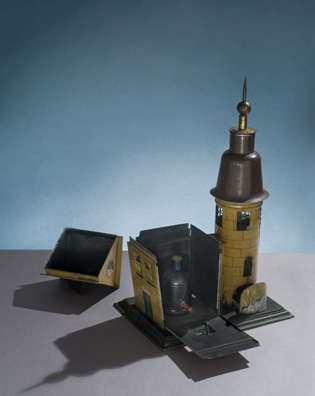 loading
loading
Last LookBoom boom room Mark MorosseView full image
Thanks to this “Thunderhouse,” Yale physics students of the early nineteenth century received a memorable lesson on the power of electricity. Such devices were used in classrooms around the United States and Europe to dramatize the value of a grounded lightning rod, which provides a path for a lightning bolt to pass harmlessly around your house and into the ground. An ungrounded rod is an invitation to a house fire. Or to an explosion—if, like the imaginary occupants of the Thunderhouse, you happen to store gunpowder at home. An instructor would place said gunpowder in the canister inside the house, connect a chain from the top of the 18-inch tower to the canister, and connect an electricity generator to the top of the tower. BOOM! Sparks would erupt, the roof would fly off, and the walls would come tumbling down. (Demonstrations with a grounded chain were much less exciting.) This specimen, now in the Peabody Museum's Historic Scientific Instruments collection, was used in Yale classrooms, but the particulars of its provenance are unknown; it appears to be a European-made model. Heat damage to the drawer at the base of the tower suggests an instructor may have gotten carried away.
The comment period has expired.
|
|